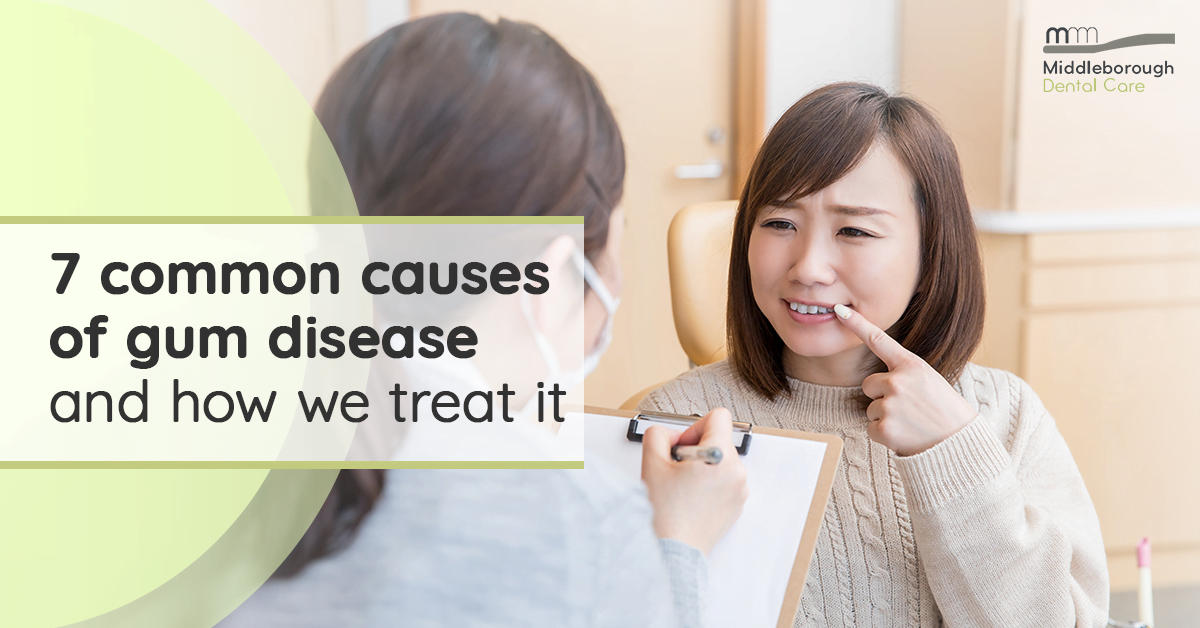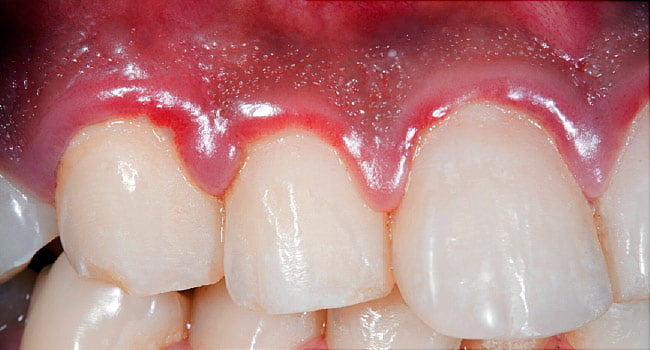
7 common causes of gum disease and how we treat it
Sometimes we get patients coming in asking for cosmetic procedures – whitening, veneers, orthodontics – only for us to find that they have active gum disease, which means we can’t go ahead with any sort of procedure until that’s been addressed.
If you have any sort of inflammation or redness of the gums, that could be a sign of gingivitis and if you’re getting bleeding when brushing or flossing it could even be periodontitis (which is a more severe infection that may occur if gingivitis isn’t treated).
Here are 7 of the most common causes of gum disease:
1. Plaque
Dental plaque forms on all tooth surfaces but particularly where teeth and gums meet. If it’s not removed by brushing and flossing, it can become mineralised and form tartar, or calculus.
Both dental plaque and tartar are filled with harmful bacteria, and if they aren’t removed from teeth, they will begin to irritate the gums and cause gingivitis.
2. Nutrition
A diet high in sugar and carbohydrates and low in water and vitamin C is a recipe for gum issues.
3. Crooked teeth
Although crooked, rotated, or overlapping teeth might not directly cause issues, they will be harder to keep clean and therefore create more areas for plaque and calculus to accumulate.
4. Hormonal changes
Normal hormonal changes in puberty, pregnancy, and menopause typically correlate with a rise in gingivitis. An increase in hormones causes the blood vessels in the gums to be more susceptible to bacterial and chemical attack.
5. Tobacco
Among its many other impacts on your body, smoking interferes with the normal function of gum tissue cells. This makes you far more vulnerable to infections like gum disease.
6. Alcohol
Not unlike tobacco, regular or excessive alcohol consumption has many potentially detrimental effects on your physical health, including a measurable negative impact on oral defence mechanisms.
7. Medication
Some medications might have side effects that reduce saliva production and flow, which can leave you with a dry mouth, encouraging bacteria to spread more readily.
Other possible causes
There are a few other factors that can contribute to gum diseases, including stress – which impairs the body’s immune response – diabetes, cancer, mouth breathing, and poorly fitted dental appliances.
Naturally, if you have a combination of factors that can contribute to gum disease, the chances that you will have to be more careful and more proactive in your preventative methods increase.

How to know if you have gum disease
It’s possible to have gum disease without knowing, however, there are several symptoms:
- gums that are red, tender, or swollen
- gums that bleed when you brush or floss your teeth
- gums that have pulled away from the teeth
- loose teeth
- a change in how your teeth fit together when you bite (malocclusion)
- pus between teeth and gums
- pain when chewing
- sensitive teeth
- partial dentures that no longer fit
- foul-smelling breath that doesn’t go away after you brush your teeth
The only way to be sure is through a dental exam, during which we probe your gums with an instrument that checks for inflammation while measuring the depth of the pockets around your teeth. Normal pocket depth is between 1 and 3 millimetres.
How we treat gum disease
At Middleborough Dental Care, we offer both ultrasonic and hand scaling to remove the bacterial plaque, a procedure you should have done regularly.
Before we carry out this scale and clean, we’ll apply topical anaesthetic gel to ease any sensitivity that may occur.
If we find that you have deep gum pockets (5 millimetres or more) we provide deep cleaning focused on any affected areas.
We also work with a specialist periodontist for patients with more advanced gum disease.
Come and see us soon
As we often say, nothing beats the three main pillars of oral care:
- Brushing your teeth for at least two minutes twice a day with fluoride toothpaste;
- Flossing between your teeth every day; and
- Visiting the dentist at least every six months.
If you haven’t been checked for gum disease in the past six to 12 months, make an appointment sooner rather than later.
If you do happen to have any signs of gum disease, let us identify the issue and start treatment before it gets any worse.
Give us a call today and make a booking.